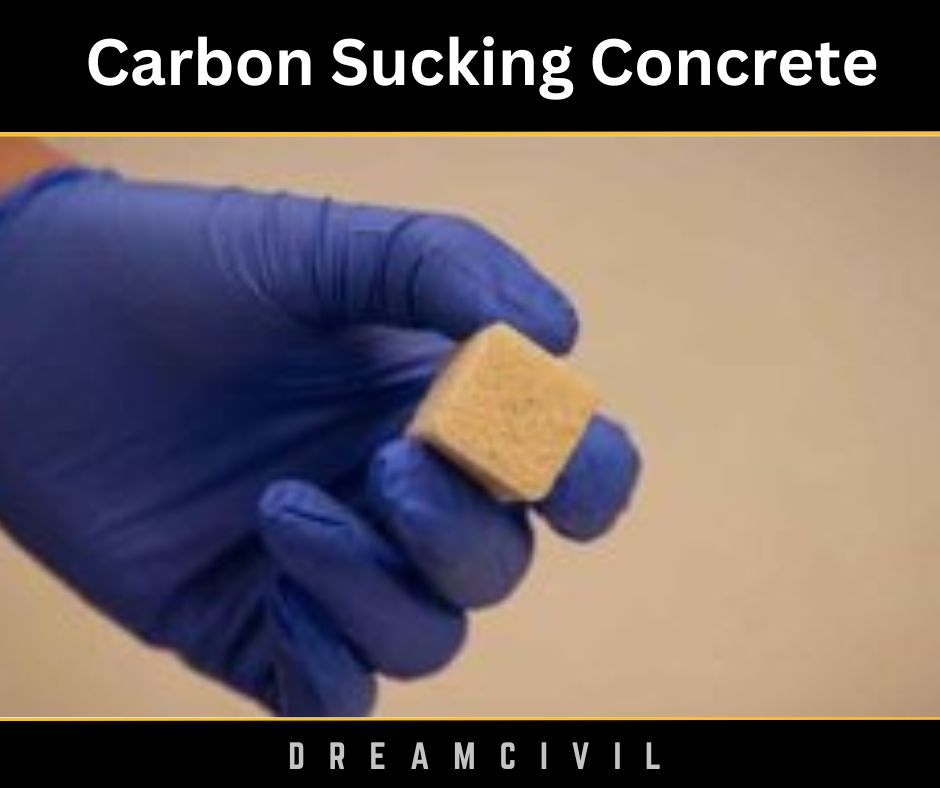Table of Contents
In this article, we will discuss carbon sucking concrete.
Construction factories comprise about 39% of global greenhouse gas emissions, and concrete is an essential construction component, holding an 8% share.
Concrete is prepared to utilize cement mixed with an aggregate – a grainy blend of materials such as stone and sand. After blending, concrete is flowed into a mold and is left to set. The set mix is then utilized for construction use.
While this process doesn’t free any carbon dioxide, the issue lies down in the process, including cement preparation, which frees large quantities of CO2. Many preparation companies and suppliers are now utilizing Eco-friendly concrete replacements to retain a check on the environmental effect of concrete.
Carbon sucking concrete isn’t suitable for big apartments and structures.

1. Carbon Sucking Concrete
Two researchers from the Massachusetts-based Worcester Polytechnic Institute, Suzanne Scarlata and Nima Rahbar, introduced a concrete replacement to dispose of greenhouse gases from the atmosphere.
The material is named enzymatic construction material (ECM), is self-healing, and can be utilized to match previous concrete.
ECM is made of carbon anhydrase, an enzyme available in living cells. In reaction with carbon dioxide, it results in calcium carbonate crystals, the central part of ECM.
Other parts of ECM are sand slurry and polymer, which work as binding agents. The last mixture is ECM which can separate CO2 from the air and preserve it.

2. Advantages of ECM
For 400 lbs of CO2 emitted per cubic yard by concrete, ECM contains the potential to suck18 lbs of CO2. Enzymatic construction material is more likely to be recyclable than concrete. ECM utilizes stronger and less dangerous enzymes than the bacteria utilized in other options of concrete.
3. Disadvantages of ECM
Enzymatic construction material contains a strength of 12 MPa compared to the strength of Portland cement, which is 20-40 MPa. This results in it being unsuitable for large apartments or construction.
It can only be utilized for projects that want a lower load, like the side of a building. Enzymatic construction material costs about $168 per yard. Whole concrete costs about $125 per yard, though the energy costs of ECM (the sum effects of all greenhouse gas emissions credited to the material across its life cycle) are less.
4. Conclusion
ECM has been allowed to Enzymatic Inc. for its preparation as a construction material. The researchers are enhancing the strength of ECM and increasing its withstand capability to water and humidity to prepare it best for bigger work.
5. References1. Content Filter & Authenticity Checking Team, Dream Civil International (Our team checks every content & detail to maintain quality.) |
| Read Also: Low E Glass |

